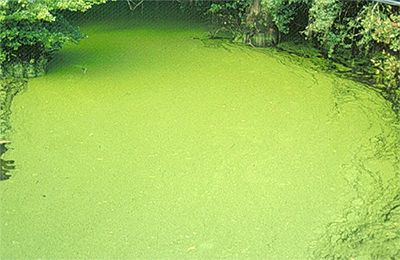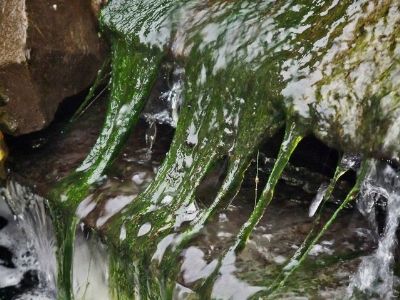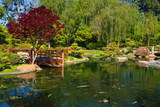What Causes Algae
The Life of Koi: Understanding The Upkeep of Koi Ponds And Water Gardens
Chapter IV: What Causes Algae
It’s nearing summer and your pond is flourishing, the lilies are blooming, the fish are happily swimming to the edge of the pond when you walk by asking for food. One day you wake up go outside with your cup of coffee and glance proudly into your pond and see that the green monster has come. The green monster isn’t the wall in left field at Fenway Park, but algae. The very word brings dread to any fish enthusiast both pond keepers and aquarium hobbyists alike. It means there are a lot of hours of scrubbing and cleaning rocks ahead. That weekend you had planned on sitting outside sipping sun tea and looking upon your pond in all its glory has turned into a weekend of being covered in green slime battling green fish. Don’t fret there are solutions. You could always use chemicals to get rid of the algae, but some chemicals can be harmful to your fish. Anjon offers a wide array of products that can help. How do you fight algae? What is algae and what can you do to save your pond from the green fish?
It is important to note that in addition to making your pond look like a place where the swamp thing would call home, algae can clog filters and choke out plants. Microscopic floating algae is beneficial in small amounts, but large amounts of planktonic algae, as well as, blanket and string algae need to be controlled for the good of your pond’s ecosystem.
Every spring as temperatures rise and the hours of daylight increases, an algae bloom occurs in almost every koi pond. Green water that make koi disappear into the green gloom or there’s horrid string algae that seems to crop up out of nowhere. Algae seems to be inescapable fact of pond life.
The change of weather and available nutrients from dead and decaying plant material and fish waste are fuel for algae and cause algae blooms to occur. Algae is a simple organism, all it needs is sunlight, carbon dioxide and nutrients such as nitrates and phosphates, ammonia.
Let’s try to understand what algae is. Algae is a primitive plant that, through photosynthesis, combine water and carbon dioxide to form sugars for energy and growth. There are two types of algae. Phytoplanktonic, which is free floating, which includes types that cause “green water”.

This type of algae occurs in spring and in new ponds, because the filter has not had time to establish a sufficient bacterial population yet.
The second type of algae is Benthic or attached algae. This includes string algae or horsehair algae. String Algae can be tough to get rid of. This type of algae can remain dormant for years in a dried state until put in water, which will reactive it and it will thrive.

A major issue with this type of algae that when you manually remove it from your pond, which is recommended, causes it to release spores into the water and the vicious cycle begins again.
In the next chapter I will explain how to get rid of algae naturally.
Recent Posts
-
Chose the Right Pump For Your Water Feature
When deciding which pump will work best for you pond, you will need to take three things into accoun …Jul 19th 2022 -
Natural Solutions to Getting Rid of Algae
The Life of Koi: Understanding The Upkeep of Koi Ponds And Water GardensChapter V: Natural Solutions …Oct 13th 2020 -
What Causes Algae
The Life of Koi: Understanding The Upkeep of Koi Ponds And Water Gardens Chapter IV: What Cause …Oct 13th 2020




